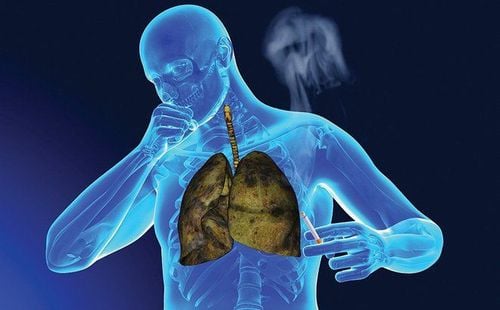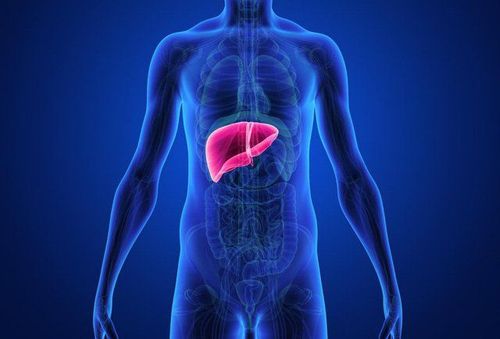This is an automatically translated article.
The article is professionally consulted by Master, Doctor Tran Ngoc Hai - Internal Oncologist - Internal Oncology Department - Vinmec Times City International Hospital. The doctor has extensive experience in the examination, diagnosis and treatment of cancers.Lung cancer that metastasizes to bone not only causes pain and discomfort for patients, but also can lead to broken bones and interfere with daily activities of patients.
1. What is bone metastatic lung cancer?
Bone is one of the most affected organs in metastatic lung cancer cases, accounting for 30-40%. In clinical practice, more than half of the cases of detected malignant cells metastasized to the bone without any obvious cause are related to lung cancer.Malignant cells originating from the lungs spread to other organs in the body, including the skeletal system, by blood or lymphatic routes. Metastatic bone lesions can be divided into three categories: osteogenic, osteolytic, and mixed. Lung cancer that metastasizes to bone often causes osteogenic lesions. The bones most commonly affected in metastatic lung cancer include the thoracic and back spine, humerus, femur, metatarsal bone, and pelvis.
It is necessary to distinguish lung cancer with bone metastases from the concept of primary bone cancer, primary bone cancer is a term that refers to a malignant disease of bone origin caused by the division and growth of bone cells. abnormal.
2. Manifestations of bone metastatic lung cancer
Bone pain is the most common symptom of lung cancer with bone metastases. In the early stages, patients sometimes only feel a dull, vague pain, but the expression will become more and more severe. The pain that the patient faces will increase with movement. Particularly for the spinal group, the pain is more severe at night and after waking up the next morning.When cancer cells spread to the spine and form tumors at the place of compression of the spinal cord, causing pain, paralysis of the lower extremities or even dysfunction of the bladder and bowel sphincters. This is an emergency situation that needs to be treated urgently to save the patient's life.

Bệnh ung thư phổi di căn xương gây ra những đau đớn, khó chịu cho người bệnh
In some other cases, the first manifestation to help detect advanced lung cancer with bone metastases is a fracture. Metastatic bones have poor bone quality, because normal cells are gradually replaced by cancer cells. Fractures in patients with advanced lung cancer are often those that are unrelated to trauma or are caused by minor trauma, called pathological fractures.
Occasionally, the patient has abnormalities of other organs such as fatigue, confusion, muscle weakness, nausea and vomiting, arrhythmia caused by bone breakdown that increases calcium levels blood. This condition is urgent and easy to distract and confuse healthcare workers.
Besides, bone metastases lung cancer also causes more serious complications such as fractures, reducing the quality of life of patients. Impairment or loss of mobility when a patient breaks a bone increases the risk of blood clot formation leading to deadly dangers such as pulmonary embolism.
Lung cancer patients with bone metastases face a variety of other manifestations that come from the side effects of one or more combination treatments such as surgery, radiation therapy, chemotherapy.
3. How is bone metastatic lung cancer diagnosed?
The clinical manifestations mentioned above are indicative and suggestive of the disease only. There are many different possible explanations for bone pain or fractures unrelated to trauma. Diagnosis of lung cancer with bone metastases is mainly based on paraclinical means, including:Bone X-ray: This is the first basic imaging tool, but it is no longer used as much as before due to the The obtained results are non-specific. CT bone scan: This tool is more valuable than X-ray film, which examines the abnormal images of bone tissue. Bone MRI: gives more detailed images and distinguishes the nature of different components in an abnormal organization. PET/CT and SPECT/CT: This is a modern means and increasingly applied in the diagnosis of bone metastases. PET/CT and SPECT/CT have the ability to detect cancer cells with higher accuracy, but because of their high cost, they have not been widely applied.

Chẩn đoán ung thư phổi di căn xương chủ yếu nhờ vào các phương tiện cận lâm sàng
4. Treatment of bone pain in patients with metastatic lung cancer
Patients with bone metastatic lung cancer face many painful symptoms and difficulties in life. However, currently, the treatment of lung cancer cases with bone metastases focuses mainly on alleviating symptoms of bone pain and preventing other dangerous complications to ensure quality of life for patients. Definitive treatment of malignant cells remains a challenge. Treatment methods are quite diverse and the treatment trend is to combine many different methods such as:Pain relievers Pain relievers are the first approach when experiencing bone pain symptoms in patients. Because bone pain in patients with metastatic lung cancer is quite painful, medications are often chosen on a scale from mild pain relief to strong pain relief, sometimes requiring the use of potentially addictive drugs such as morphine.
Drugs to support bones Other drugs used to support and prevent fracture complications are also an option to treat patients. Bisphosphonates are used to treat and prevent osteoporosis. Denosumab also has the ability to prevent osteoporosis complications and is administered by subcutaneous route.
Radiation This is the most commonly used method of bone pain relief because of its high pain-relieving effect, few unwanted effects and low cost. Symptoms of bone pain completely disappear in about one-third of patients after the end of radiation therapy. The pain-relieving effects of radiation therapy can last from many months to a year. This is the salient advantage of this method. According to many experts' recommendations, radiation therapy is considered the primary treatment option for patients with advanced cancer with bone metastases.
Surgery Surgery is applied to fix broken bones or prevent fractures when bone quality is too poor. Surgery is also indicated when the tumor grows too large, causing compression of the spinal cord.
Periodic lung cancer screening is the most effective way to prevent the disease, Vinmec International Hospital is implementing a Lung Cancer Screening Package, with many advantages:
Having a full range of specialized facilities for diagnosis Diagnosis and staging before treatment: Endoscopy, CT scan, PET-CT scan, MRI, histopathological diagnosis, gene-cell testing,... There are full range of main treatment methods. Cancer leadership: surgery, radiation therapy, chemotherapy, stem cell transplant... A team of highly qualified and experienced doctors. Comprehensive professional cooperation with domestic and international hospitals: Singapore, Japan, USA, .. Comprehensive treatment and care, multi-specialty coordination towards individualizing each patient.
Please dial HOTLINE for more information or register for an appointment HERE. Download MyVinmec app to make appointments faster and to manage your bookings easily.













